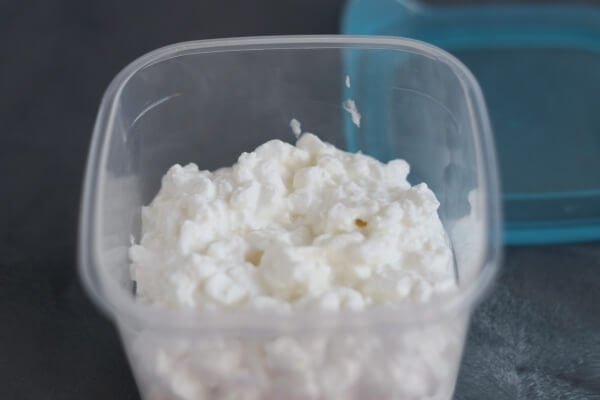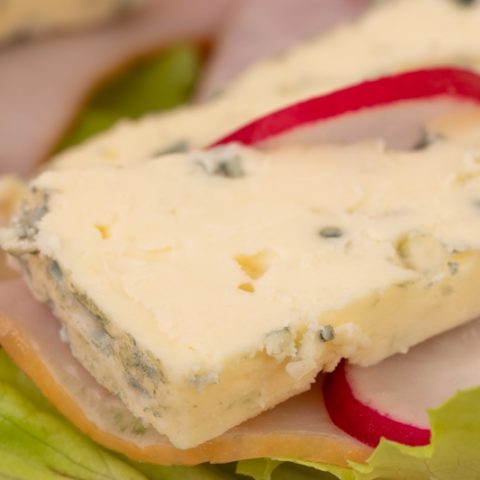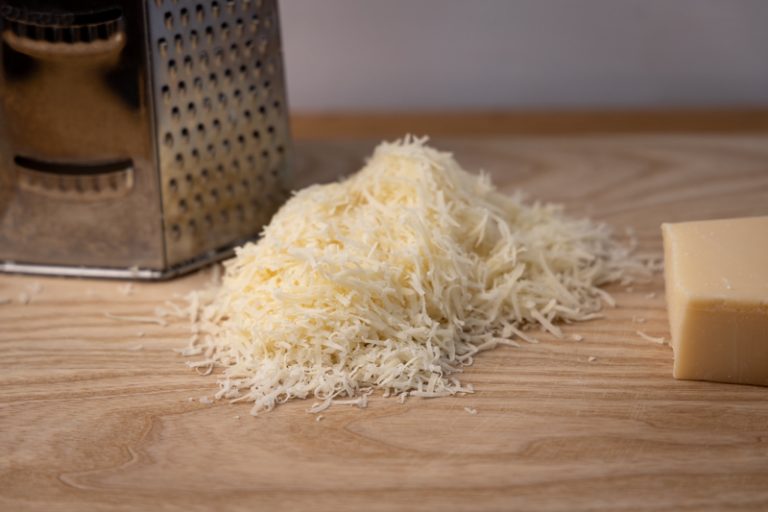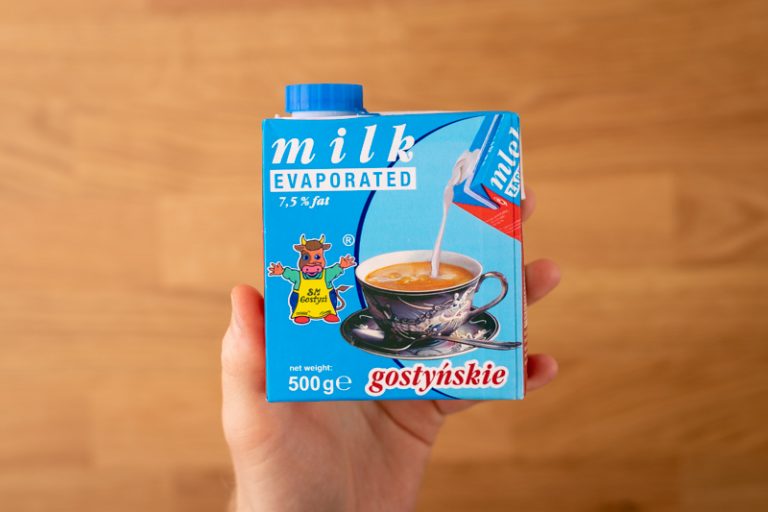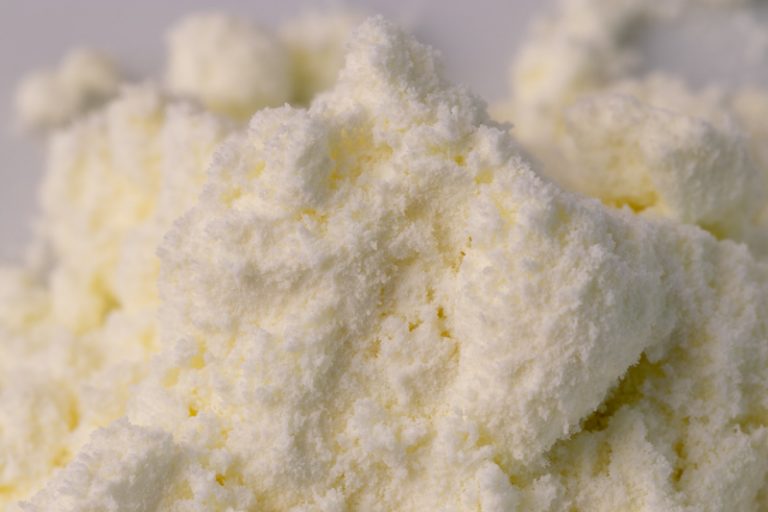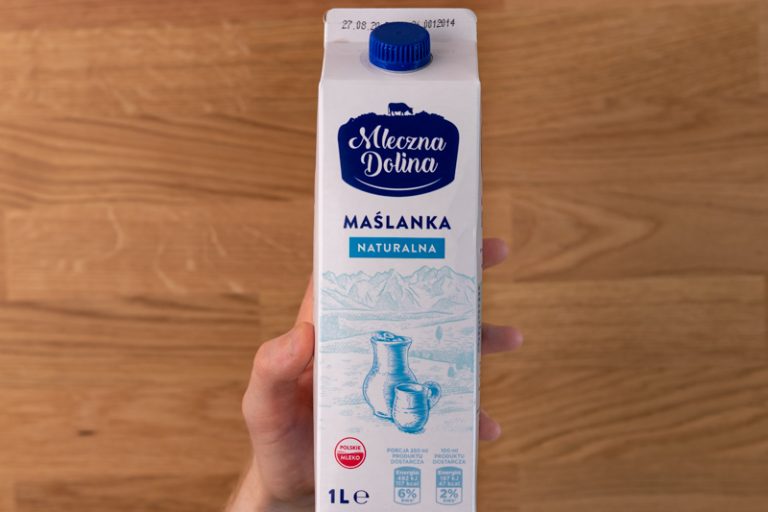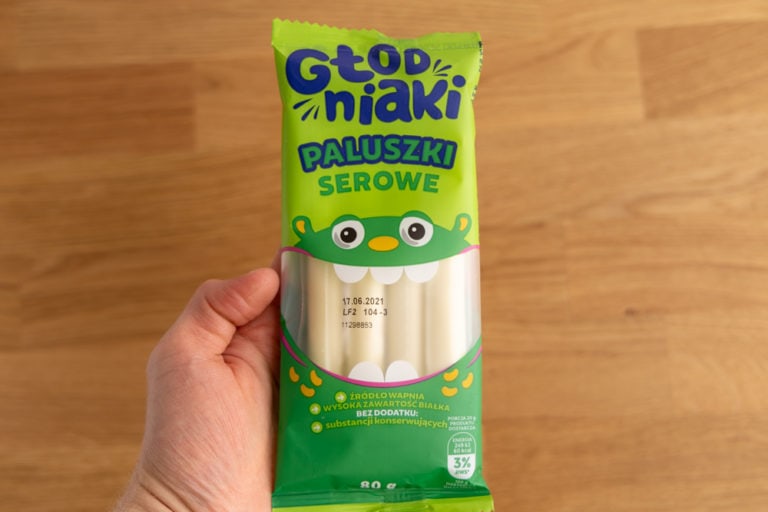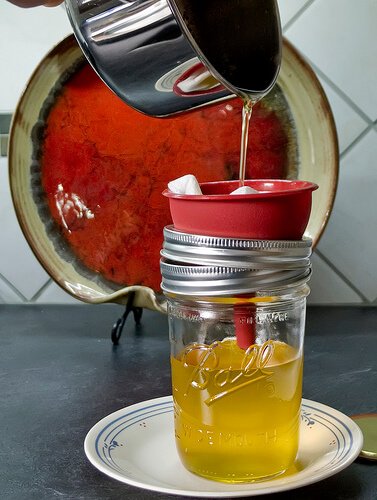Can You Freeze Cottage Cheese? (Before & After Pics)
A few too many containers of cottage cheese in the fridge? That’s when you probably started thinking: can you freeze cottage cheese?
Or maybe you have some cottage cheese leftovers that you don’t feel like eating anytime soon, but you definitely don’t want to throw out.
If you’re not sure how freezing this dairy product works out, or if it will be good enough for your needs after thawing, this article is for you. In it, I talk about:
- how freezing and thawing affects cottage cheese (including before & after photos, and a video)
- how to freeze cottage cheese the easy way
- ways to defrost the product
- types of recipes that thawed cottage cheese works best in
- tips for using defrosted cottage cheese instead of a fresh one
Interested? Let’s dive right in.
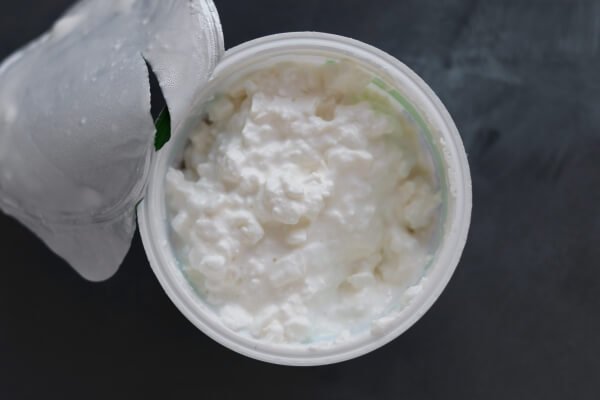
Can You Freeze Cottage Cheese?
Yes, you can freeze cottage cheese for 3 to maybe 6 months. Unfortunately, like other dairy products, the texture of cottage cheese changes after defrosting. It becomes much chunkier, but you can still use it in cooked and baked dishes.
That’s the short version. Let’s talk about this in more detail.
Does Cottage Cheese Freeze Well?
Here’s how frozen and thawed cottage cheese looks like:
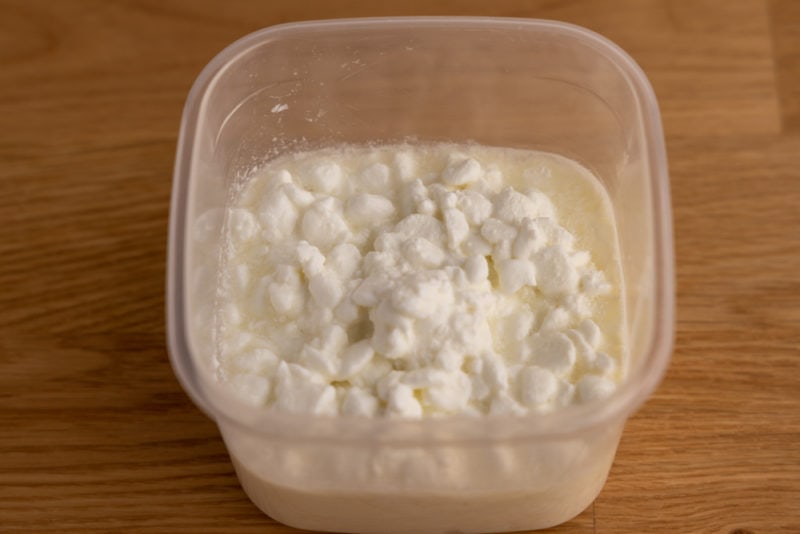
It doesn’t look all that appealing, does it? I’m pretty sure you wouldn’t use that cottage cheese as a snack dip or a bread spread. And rightly so.
If you stir it to even out the texture, you end up with a much chunkier version of cottage cheese (that looks kind of like ricotta cheese). The whey is mostly gone, and so is the fresh feel of just-opened cottage cheese.
Here’s how fresh cottage cheese compares to a thawed and stirred one:
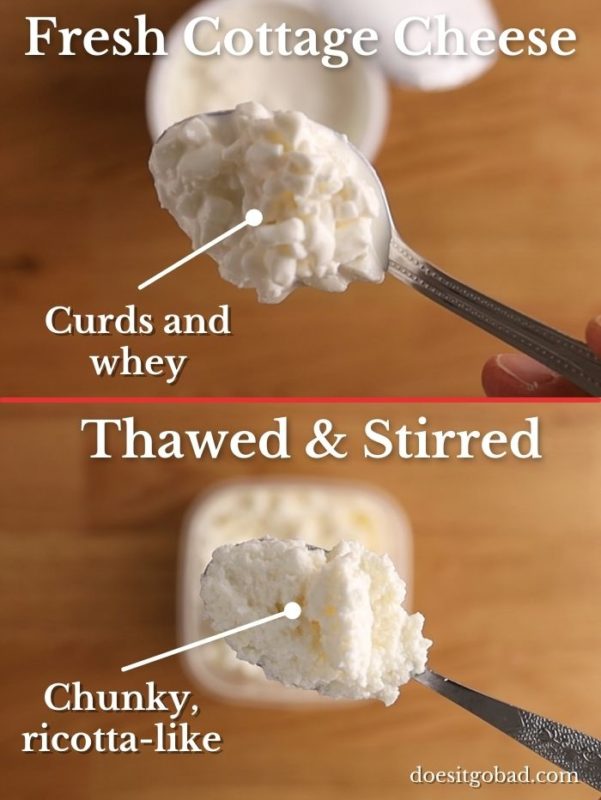
Here’s how the texture changes, starting with fresh cottage cheese and finishing with one that’s defrosted and stirred:
Looks a bit different, that’s for sure. But what about using it?
Well, that depends on how you want to use it.
In cooked dishes that include cottage cheese, those changes shouldn’t be that big of a deal. You might adjust your recipe a bit (more on that in the tips section), but that’s about it.
I, for one, use thawed cottage cheese in pancakes, and it works beautifully.
The batter before blending looks pretty much as usual:
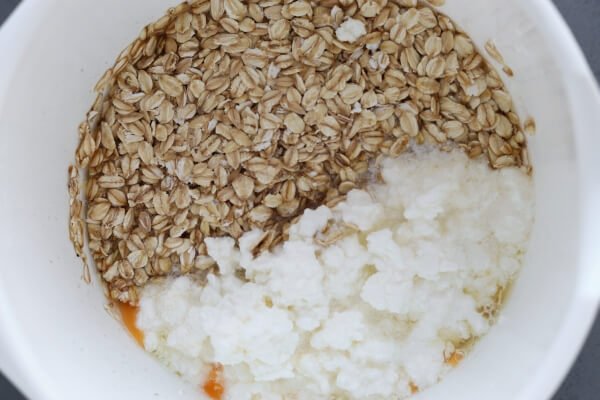
And the pancakes that I cook with defrosted cottage cheese aren’t half bad. Here’s a sample:
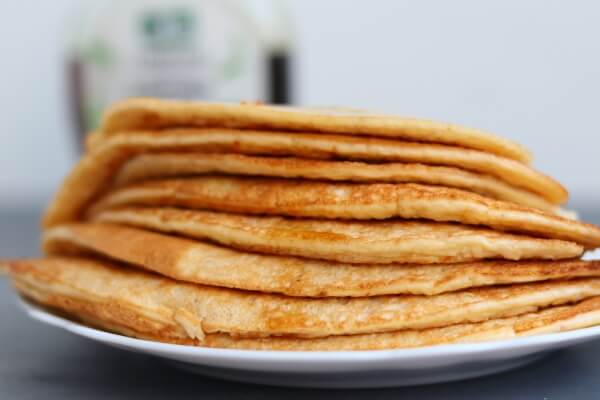
When it comes to eating thawed cottage cheese by the spoonful with fresh fruit or using it in a salad, it’s a matter of personal preferences.
Feel free to try it out in a low-stakes setting when it’s okay to toss it if it doesn’t work out as well as you wanted. And have some milk or heavy cream on hand to adjust the texture if needed.
Also, make sure to watch the video I made for this article. It shows what exactly happens to cottage cheese after freezing, defrosting, and stirring. I tested all of that so you don’t have to.
What Do the Producers Say?
Producers generally don’t recommend freezing cottage cheese, and the reasons they give are perfectly valid.
Here’s what Daisy Brand says about freezing their cottage cheese:
Please avoid freezing your sour cream and cottage cheese, as it can adversely affect the creamy texture and all-natural flavor of the product.
Daisy Brand
As you already know, the change in texture is undeniable. But it’s not as bad as most dairies describe it.
If you’re not convinced that freezing will work for your needs, remember that you have about 5 to 7 days after opening cottage cheese to use it.
Now it’s time to talk about the actual freezing.
How To Freeze Cottage Cheese
One of the best things about freezing this dairy product is that it only takes a couple of minutes of active time.
The whole process is simple and very similar to freezing ricotta cheese. No need for fancy time-consuming prep. Let’s get to it.
Before you start, plan on how you’re going to use the thawed cheese, so that you can portion it for freezing accordingly. This way, you avoid the leftovers issue.
- Portion the cheese into freezer containers or bags. Of course, it’s much easier to portion the product if you know how you’re going to use it. If you don’t have an idea yet, go with smaller portions rather than bigger ones. It’s easier to find a recipe that needs half a cup of cottage cheese than one that requires two cups. When it comes to bags versus containers, it’s up to you. Bags tend to take less space, but containers are easier to clean up afterward. Your choice.
- Add labels with name and date if needed. That’s useful if you have a giant freezer and freeze stuff all the time. I usually skip this step as mine is only a couple of small drawers.
- Chuck everything into the freezer.
Done. You can leave that cottage cheese in the freezer for at least three months, and possibly more without a noticeable loss of taste after thawing.
How To Defrost Cottage Cheese
Okay, you’ve got some frozen cottage cheese that looks like this:
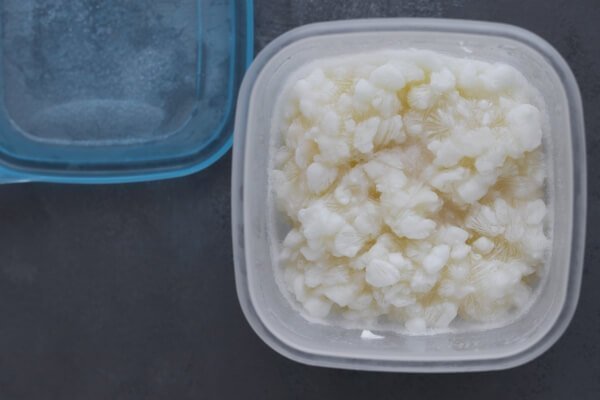
There are a couple of options to defrost it.
In the fridge
Placing the container with frozen cottage cheese in the fridge the night before you need it is the safest way to thaw this dairy product.
To make sure the entire thing is defrosted in the morning, submerge the container in cold or lukewarm water. Here’s how this setup looks like:
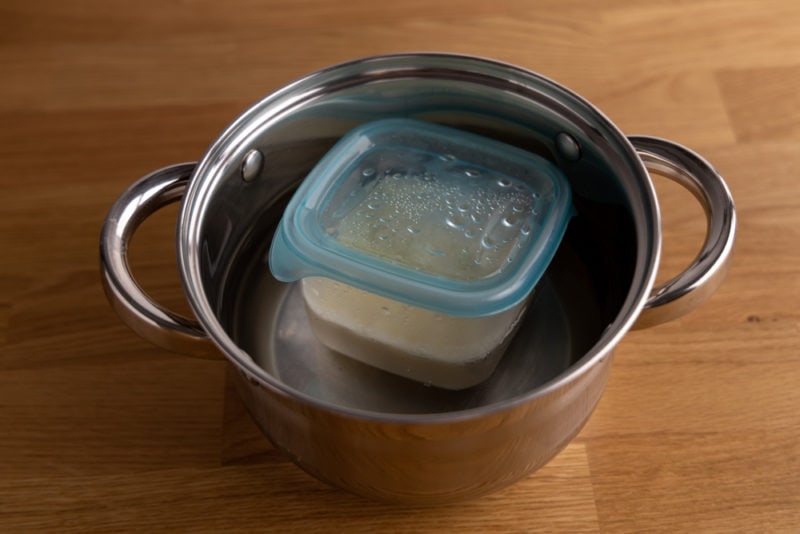
Water conducts temperature faster than air, which helps your cottage cheese defrost a bit faster than without the water.
On the counter
If you’re short on time and need to thaw your cottage cheese within a couple of hours, doing that on the counter is an option.
To be clear, I don’t recommend doing that because the cheese sits on the counter for a couple of hours, and that’s more than I’m comfortable with. But sometimes there’s no other option.
When it comes to how, not much changes. The container with the dairy product should still sit in a bowl of lukewarm water. To speed things up a bit, change the water every 30 minutes to an hour, or whenever it gets ice-cold.
Please note that defrosting cottage cheese this way still takes 2 – 4 hours, depending on how much you have. It’s not an option if you need it ready in half an hour.
If you go with this way of defrosting, make sure you use that cottage cheese in a cooked or baked dish.
Once again, if possible, thaw cottage cheese in the fridge.
Add it frozen
In some instances, you might be able to get away with adding frozen cottage cheese without defrosting it first.
Smoothies with cottage cheese are a good example – you can skip (or limit) the ice cubes and use the frozen dairy product. Make sure your blender can handle it, though.
Uses of Thawed Cottage Cheese
Okay, you decided you can freeze cottage cheese, but you’re not sure how to use it after thawing.
As I already mentioned, defrosted cottage cheese works best in cooked dishes, so I suggest starting with those. There are quite a lot of options out there, including:
- Pancakes
- Cheesecake and similar cakes (here’s how long cheesecake is good for)
- Creamy soups
- Casseroles and pasta (mac and cheese, anyone?)
Looking for specific recipes? Here’s a great list of cottage cheese uses that includes a bunch of cooked dishes that should work well for frozen and defrosted cottage cheese.
Or you can just google phrases like “cottage cheese cheesecake”, “cottage cheese soup”, and so on. You’re bound to find a bunch of interesting results to choose from.
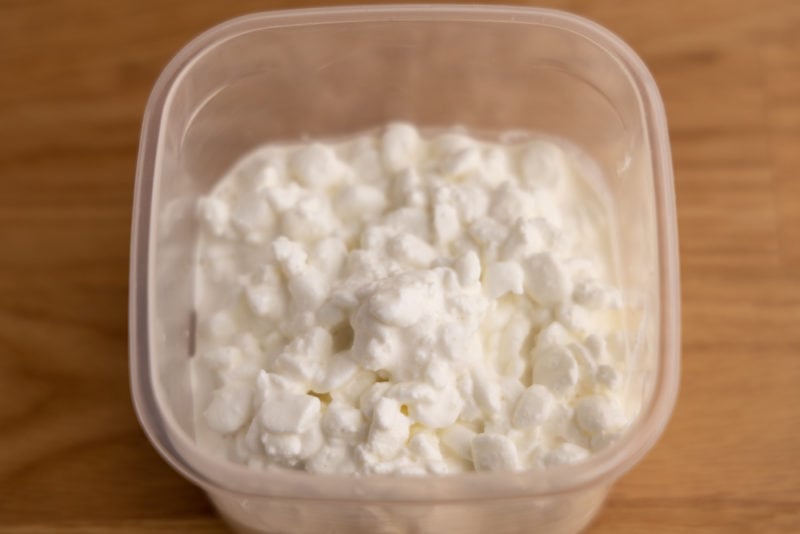
Tips for Using Frozen and Thawed Cottage Cheese
Below you can find a couple of things that I found helpful when cooking with defrosted cottage cheese. I hope you find them useful too.
Use it in recipes you’re familiar with
If you’re whipping a dish for the first time, all the things can go wrong, and often you need to make some adjustments to perfect it. That’s been my experience, at least.
And if you follow a brand new recipe, and use defrosted cottage cheese instead of a fresh one, it’s easy for things to go south. At least if you’re a beginner cook, like I am.
When you end up with a mediocre (to say the least) dish, you don’t really know if it’s the recipe’s fault, the thawed cottage cheese’s, or both.
That’s why I recommend using defrosted cottage cheese only in dishes that you already cooked at least a few times. This way, you know what to expect, and it’s not that difficult to fix things halfway through if need be.

Check the texture
Frozen buttermilk and sour cream separate after thawing and are much thinner than before freezing. Cottage cheese works the other way around – you end up with a chunkier dairy product than you started with. The texture reminds me of ricotta cheese.
Related: Can You Freeze Sour Cream?
Because of that, you might need to fix the texture of whatever you’re using defrosted cottage cheese in to get it to where it needs to be.
That’s especially important in dishes like pancakes, where the right consistency of the batter is what you need to get your pancakes nice and fluffy.
The easiest way to do that is to add some liquid like milk or cream, depending on what fits your recipe best.
That’s why knowing your recipe well is important – you know what texture you’re after and can make necessary adjustments.
Freeze the dish instead
Sometimes, the products in my freezer sit there for months. I simply cannot force myself to plan to defrost and use the product and free up that space.
If that’s you, consider whipping something with the leftover cottage cheese, and freezing the prepped dish instead.
I don’t know about you, but to me, a batch of frozen pancakes (or what have you) that I only need to reheat sounds much better than a container of frozen cottage cheese that I need to defrost and cook. The latter requires much more time and elbow grease.
If you tend to freeze stuff only to forget about it and use it half a year later because you needed some space in the freezer, do this instead.
Want to learn more about cheese in general?
Check out our guide:
Rotten Records: Share Your Snap!
Caught some food past its prime? Upload your photo to “Rotten Records” and help others spot the signs of spoilage. Every image makes our food community safer and more informed!
